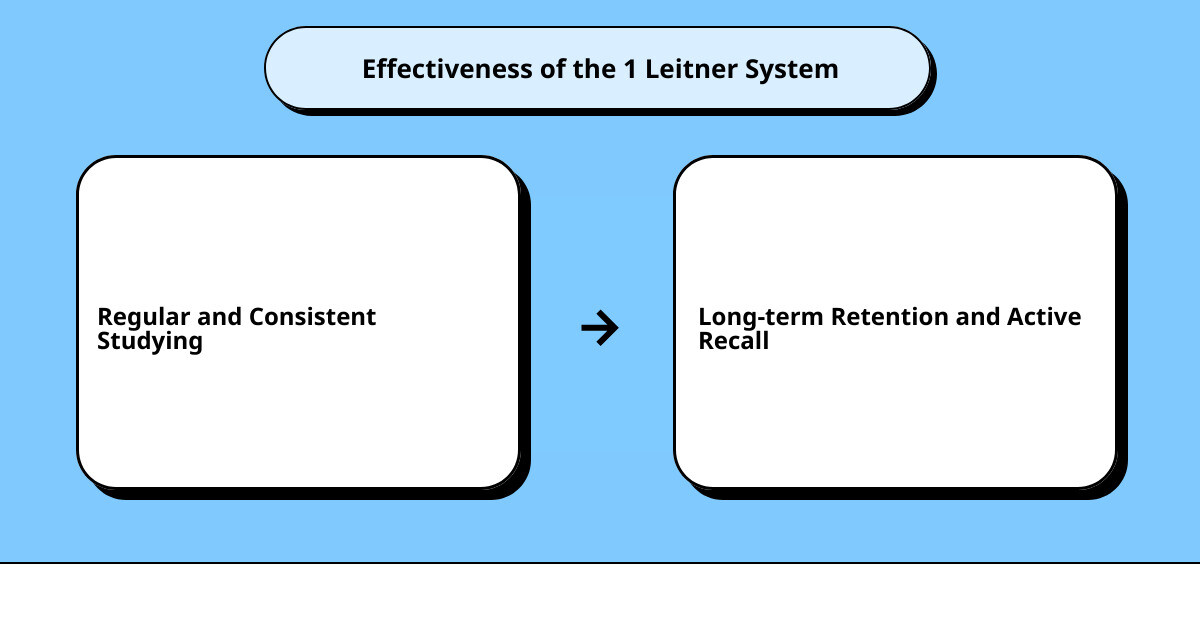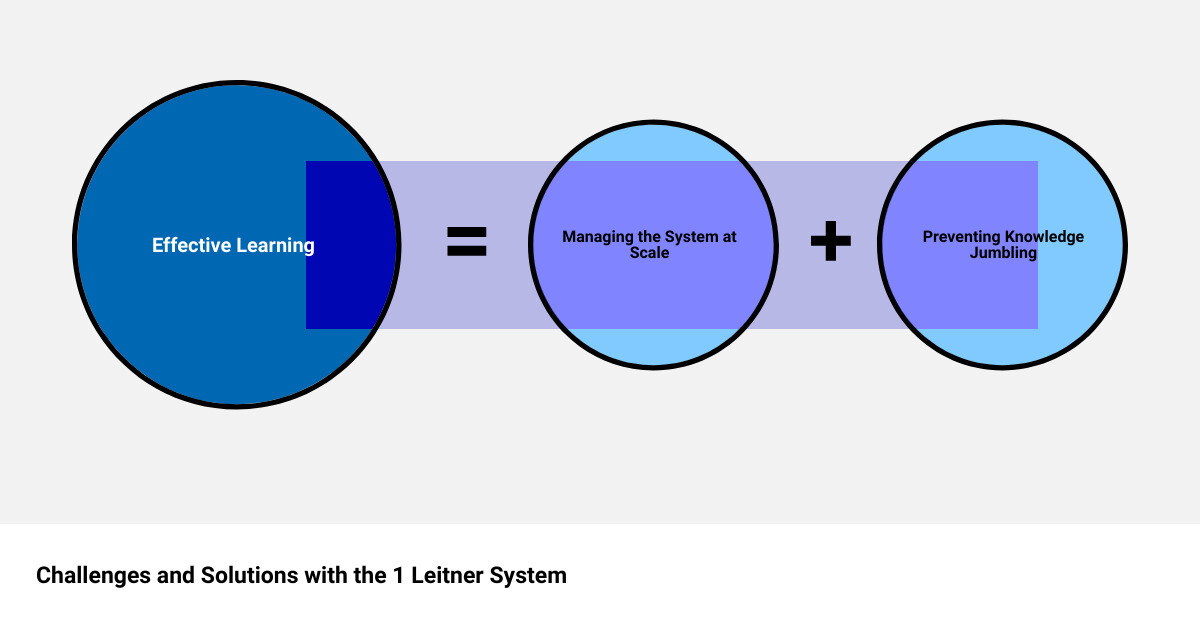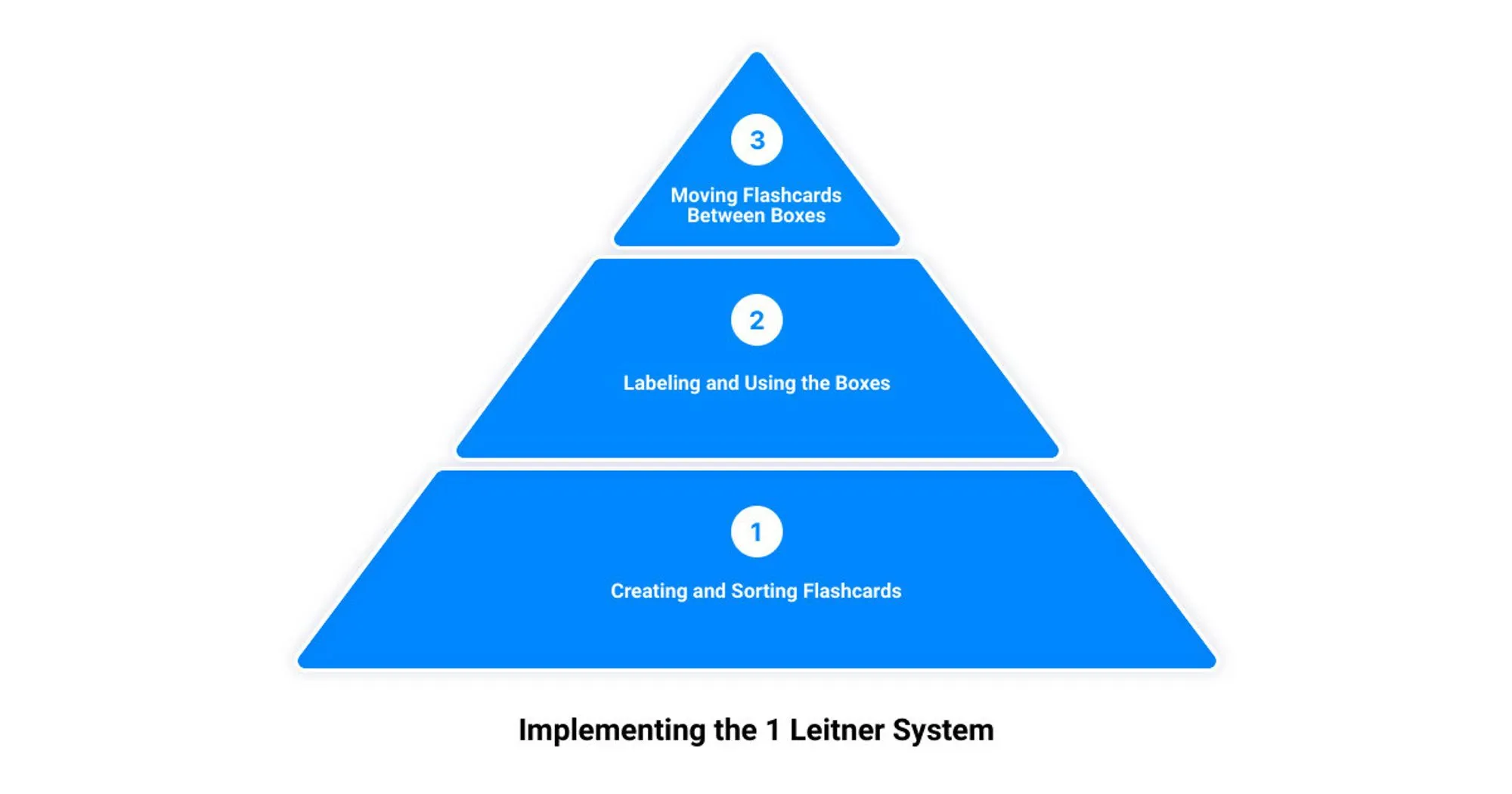Imagine a learning system so effective that it not only helps you to memorize information better but also ensures that you review the right information at the right time. Welcome to the world of the 1 Leitner System, a science-backed method that has been helping learners master complex topics for decades. Named after the German science journalist Sebastian Leitner, the 1 Leitner System is a powerful tool that can transform your learning experience, especially when it comes to mastering a complex language like Mandarin.
The 1 Leitner System harnesses the power of spaced repetition and active recall, two learning techniques that cognitive scientists highly recommend for long-term retention. By using this system, you can maximize your study sessions, focusing on the material that you find challenging, and effortlessly review those you've already mastered. Whether you are a student preparing for an exam, an adult learner picking up a new language, or an enthusiast trying to master a new concept, the 1 Leitner System can be the game-changer you need.
In this article, we'll delve into the origin of the 1 Leitner System, its principles, and how you can effectively implement it in your learning routine. We'll also explore how you can use the 1 Leitner System with the Traverse learning app to supercharge your Mandarin learning journey. Are you ready to revolutionize your study sessions? Let's get started with understanding the 1 Leitner System.
The Origin and Concept of the 1 Leitner System
Who is Sebastian Leitner?
If you're a student or lifelong learner, you've likely heard of flashcards and their effectiveness as a study tool. But have you ever wondered about the origin of the smart flashcard system you're using? Meet Sebastian Leitner, the man behind the ingenious 1 Leitner System. Leitner was a German science journalist who, in 1972, revolutionized the world of learning by introducing a method to make flashcard revision more efficient. His system, outlined in his book “How to learn to learn,” is a testament to his understanding of cognitive science and its application in everyday learning.
The Basic Principle of the 1 Leitner System
At its core, the 1 Leitner System is a simple yet powerful method built on the principle of spaced repetition. This system uses flashcards sorted into groups based on how well the learner knows each one. Each card contains a question or concept on one side and the answer or explanation on the other. When you correctly recall the information on a card, it moves to the next group with a longer review interval. However, if you fail to recall the information, the card returns to the first group, indicating that you need to review this material more frequently.
The brilliance of this system lies in its adaptability to individual learning capacities and the specific complexity of the topic. The system ensures that you're reviewing the right information at the right time, making your study sessions incredibly efficient. In addition, it leverages the power of active recall, a cognitive strategy that significantly boosts long-term memory retention.
Sebastian Leitner initially proposed a system with five boxes, but the concept has since been adapted to fit different needs. Today, a three-box system is commonly used, proving that the Leitner system's flexible framework can accommodate various learning styles and processes.
In the next section, we'll delve into the practical steps on how to implement the 1 Leitner System and how to use it effectively with the Traverse learning app, particularly for learning complex topics such as Mandarin Chinese. With the 1 Leitner System, mastering your studies becomes an attainable goal rather than an overwhelming task.
How to Implement the 1 Leitner System
Stepping into the world of efficient learning doesn't have to be complicated. With the 1 Leitner System, you will be able to tap into your brain's natural learning capacity and make your study sessions more effective. Let's break it down.
Creating and Sorting Flashcards
The first step in implementing the 1 Leitner System is creating flashcards. Each flashcard should contain one question or concept on one side and the answer or explanation on the other. This could be a vocabulary word, a mathematical equation, or in the case of our lifelong learner, a Mandarin Chinese character or phrase.
Once you've created your flashcards, the next step is to sort them into boxes. Each flashcard starts in Box 1, where you will review them on a daily basis, gradually moving them to the next box as you successfully recall the information on them.
Labeling and Using the Boxes
The 1 Leitner System utilizes a minimum of three boxes, providing a systematic approach to spaced repetition. However, for optimal results, five boxes are recommended. Label each box with a specific study time period. For instance, Box 1 could be for cards to be reviewed every day, Box 2 for cards to be reviewed every other day, and so on. The higher the box number, the longer the interval between reviews.
Using the boxes is quite simple. When you review a card and recall the information correctly, it moves to the next box. If you get it wrong, it goes back to Box 1. This system ensures that you are reviewing the right information at the right time, maximizing the efficiency of your study sessions.
Moving Flashcards Between Boxes
The magic of the 1 Leitner System comes to life in the movement of flashcards between boxes. This is where active recall and long-term memory retention come into play. When you correctly recall the information on a card, it moves to the next box with a longer review interval. If you fail to recall the information, the card moves back to Box 1, indicating that this material needs more frequent review.
With every correct recall, you're reinforcing the neural pathways in your brain, making it easier to retrieve the information in the future. On the other hand, every time a card moves back to Box 1, it's a signal that you need to strengthen your memory of this concept or fact.
In the end, the 1 Leitner System is not just about moving flashcards from one box to another. It is about understanding your learning capacity, adjusting your study patterns accordingly, and making the most of every study session. Up next, we will delve into the why's and how's of the effectiveness of the 1 Leitner System.

The Effectiveness of the 1 Leitner System
Why the 1 Leitner System Works
The 1 Leitner System is akin to a personal trainer for your brain. It's not about brute force or cramming information, but it's about intelligent, efficient, and customized training that maximizes results. But what makes the magic happen?
The secret lies in the combination of two psychological principles: spaced repetition and active recall. The Leitner System effectively turns these principles into a practical and straightforward method that you can use in your studies.
Spaced repetition involves reviewing information at strategic intervals, with the review timing increasing each time you successfully recall the information. This technique allows your brain to strengthen the neural pathways associated with the information, making recall easier over time. On the other hand, active recall involves testing yourself on the information, which further strengthens these pathways.
Long-term Retention and Active Recall
With the 1 Leitner System, you are not just memorizing facts for a one-time use. You are building long-term memory retention. Every time you successfully recall a flashcard, it moves to a box with a longer review interval. This process ensures that the information is gradually transferred from your short-term memory to your long-term memory.
Moreover, the system incorporates active recall by constantly testing your knowledge. Active learning techniques like this are much more effective than passive learning methods because they engage your brain more actively. You're not just reading the same information over and over again—you're actively retrieving it, which helps to embed it deeper in your memory.
The Importance of Regular and Consistent Studying
But it's not all about the system—it's also about how you use it. The 1 Leitner System works best when used regularly and consistently. Consistency is key to reinforcing the neural pathways in your brain and ensuring that the information sticks.
The system also promotes an efficient study pattern. Instead of wasting time reviewing information you already know well, it allows you to focus on the areas where you need more practice. Over time, this can make your study sessions more productive and less time-consuming.
In conclusion, the effectiveness of the 1 Leitner System is not just about the system itself. It's also about how you use it. By understanding the principles behind it and using it consistently, you can optimize your learning and master your studies.

Using the 1 Leitner System with Traverse Learning App
While the 1 Leitner System is a powerful approach to learning on its own, integrating it with the right tools can take your study sessions to a whole new level. One tool that can significantly enhance your learning experience with the Leitner System is the Traverse Learning App. This app seamlessly integrates with the methodology of spaced repetition and active recall, key principles of the Leitner System.
Importing Anki Decks into Traverse
Anki is a popular flashcard app that embraces the Leitner System's methodology. It allows you to create flashcards for new words and phrases, and its built-in spaced repetition system helps you review these materials at the most effective intervals. The beauty of Traverse is that it lets you import your Anki decks, making it an incredibly efficient tool for learning.
To import your Anki decks into Traverse, you simply follow a straightforward process. This integration allows you to not only review your flashcards but also to utilize Traverse's unique features such as mind-mapping and connected note-taking. This organization mirrors the structure of your brain, resulting in improved comprehension and retention.
Using the 1 Leitner System for Mandarin Learning with Mandarin Blueprint
If you're on a mission to master Mandarin, the combination of the 1 Leitner System, Traverse, and Mandarin Blueprint creates a powerful learning ecosystem. Mandarin Blueprint is a comprehensive course that guides you through the intricacies of learning Chinese characters, Pinyin, and meanings. By using Anki for creating flashcards and Traverse for organizing and reviewing them, you can amplify the effectiveness of your Mandarin Blueprint studies.
The 1 Leitner System with Traverse and Mandarin Blueprint offers a well-structured and dynamic learning experience. It ensures that your efforts are directed towards what truly matters—learning. This combined approach respects the journey of mastering Mandarin as a marathon, not a sprint. It emphasizes consistency, continual progress, and most importantly, the enjoyment of the learning process.
In the next section, we'll discuss potential challenges you might encounter while using the 1 Leitner System and offer solutions to overcome them.

Potential Challenges and Solutions with the 1 Leitner System
Despite its numerous advantages, the 1 Leitner System isn't without its challenges. However, the beauty of this method is that with a little creativity and planning, these challenges can be effectively mitigated. Let's delve into the two main hurdles: managing the system at scale and preventing knowledge jumbling.
Managing the System at Scale
As a lifelong learner, you might be dealing with multiple subjects or vast amounts of information, such as learning the Chinese language with its 20,000 commonly used characters. As your flashcard collection grows, it might start to feel overwhelming, even discouraging.
Luckily, there are a few strategies to tackle this problem:
Strategic flashcard creation: When creating flashcards, be selective. Include only the most essential pieces of information - the key facts, figures, formulae, or vocab - and keep the information minimal to maximize recall. This will ensure that your collection remains manageable and your learning, efficient.
Starting small and scaling up: Instead of diving headfirst into the deep end, consider starting with one subject or a limited number of flashcards. As you become more familiar with the system, gradually add more subjects or flashcards.
Organizing flashcards: If you’re using the Leitner system for multiple subjects, keep those flashcards separate with box dividers or even separate boxes. This prevents you from jarring your learning flow with unrelated information.
Preventing Knowledge Jumbling
Another challenge that learners might face is the potential for knowledge to get jumbled up. As flashcards move between boxes at different rates, you might find yourself reviewing unrelated topics, which can be confusing.
Here's how you can counter this:
Topic segregation within boxes: Consider creating dividers within your boxes to separate out topics. For example, if you're learning Mandarin, you might sort your flashcards into categories like "vocabulary," "grammar," and "characters." This way, you can tackle one topic at a time, enhancing your focus and comprehension.
Sequential studying: Although the Leitner system doesn't inherently support chronological or sequential studying, you can tweak it to fit your needs. For example, you might choose to review all the flashcards on a particular topic or chapter before moving onto the next one.
Use of digital learning tools: Digital tools such as Traverse can elevate your Leitner system experience by offering features like tagging and cross-referencing. These features make it easier to retrieve notes and connect them to other ideas, ensuring you don't lose track of any information.
Remember, the goal of the 1 Leitner System is to facilitate effective and efficient learning. By anticipating potential challenges and preparing solutions, you can ensure that this powerful technique works to your advantage, helping you master your studies with ease.
Conclusion: Mastering Your Studies with the 1 Leitner System
Accelerate your learning journey and conquer Mandarin Chinese (or any other subject!) with the 1 Leitner System. As we've explored, this system is a potent tool for any lifelong learner. Its science-backed approach prioritizes active recall and spaced repetition, two proven strategies for long-term retention and effective learning.
This system is particularly beneficial for mastering complex subjects like Mandarin. By breaking the language down into digestible flashcards and reviewing them at optimal intervals, you increase your chances of remembering vocabulary, grammar rules, and even Chinese characters. The 1 Leitner System helps ensure that every study session is purposeful and productive, which is crucial for anyone balancing learning with other life commitments.
Moreover, with digital tools such as Traverse, the 1 Leitner System becomes even more accessible and efficient. You can seamlessly import your Anki decks into Traverse and leverage its unique features, like viewing flashcards within your knowledge tree. This not only facilitates review but also helps you learn within a broader context, enhancing understanding and recall.
However, like any powerful tool, the 1 Leitner System can present challenges. It requires consistent effort and careful management to prevent the system from becoming overwhelming. But with a bit of practice and patience, these hurdles are far from insurmountable. Especially when the reward is a more effective, enjoyable, and productive learning experience.
Ultimately, mastering your studies with the 1 Leitner System is about more than just passing an exam or learning a new language. It's about empowering yourself as a learner. It's about taking charge of your education, understanding how you learn best, and applying that knowledge to achieve your goals.
So, whether you're a seasoned polyglot or a beginner in the world of Mandarin, give the 1 Leitner System a try. You might just find it's the key to unlocking your full learning potential. And remember, the journey of learning is a marathon, not a sprint. With the 1 Leitner System, you're in it for the long run.

